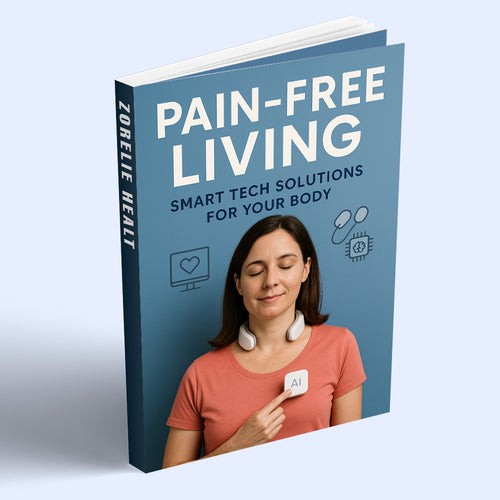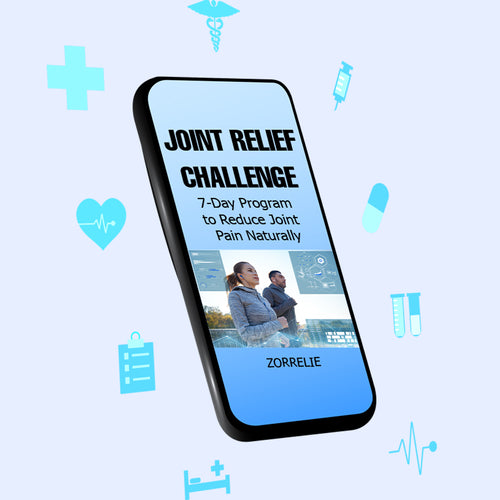1. The Science Behind Relaxation: Why Evening Rituals Matter
In modern life, evenings have become an extension of our working hours — screens, late-night emails, endless scrolling.
While it may feel productive, these habits keep the nervous system trapped in a “fight-or-flight” state. The brain remains alert, muscles stay tense, and cortisol levels rise — all of which sabotage sleep quality and long-term health.
1.1 The Physiology of the Wind-Down
Every human body operates under the autonomic nervous system, divided into two branches:
-
Sympathetic (stress) — your “go mode,” ideal for focus or exercise.
-
Parasympathetic (recovery) — your “rest and digest” mode.
When you intentionally slow down through rituals, you activate the parasympathetic system.
Heart rate drops. Muscles loosen. The mind stops racing.
Your body interprets these cues as signals: “It’s safe now. Time to repair and recharge.”
1.2 Benefits Proven by Research
Numerous studies have shown that establishing an evening routine:
-
Decreases sleep onset latency (you fall asleep faster)
-
Improves sleep depth and REM cycles
-
Lowers stress hormones and stabilizes mood
-
Promotes muscle recovery and reduces next-day fatigue
-
Strengthens emotional resilience
A 2022 study published in Sleep Health found that individuals with consistent nightly rituals experienced 32% fewer awakenings during the night compared to those without structure. Consistency, not duration, made the biggest difference.
2. Building Blocks of an Effective Evening Routine
A well-crafted ritual doesn’t have to be complicated or time-consuming. The goal is to create predictable signals for your body — telling it when to release tension, disconnect, and transition into rest.
| Element | Purpose | Recommended Time |
|---|---|---|
| Digital Detox | Reduces blue light & overstimulation | 60–90 mins before bed |
| Gentle Stretching | Relieves physical tension | 10–15 mins |
| Mindful Breathing | Calms the nervous system | 5–10 mins |
| Warmth or Massage | Soothes muscles & improves circulation | 10 mins |
| Journaling / Gratitude | Clears emotional clutter | 5 mins |
| Environment Setting | Cues the brain for rest | Ongoing |
Each component addresses a specific dimension of relaxation: physical, emotional, and environmental.
3. Step-by-Step: A 60-Minute Evening Ritual
Here’s a full example of a science-backed routine that can be tailored to your lifestyle.
Step 1: Disconnect to Reconnect (–60 to –45 min)
Put your phone on “Do Not Disturb.” Avoid emails, social media, or any high-stimulus content.
Instead:
-
Dim the lights or switch to warm-tone bulbs.
-
Play soft ambient or nature sounds.
-
Close unnecessary browser tabs — both digitally and mentally.
This is the moment to symbolically end your day. Studies show reducing blue-light exposure an hour before bed improves melatonin production by up to 58%.
Step 2: Gentle Movement & Stretching (–45 to –30 min)
Our bodies carry the day’s stress — in the neck, shoulders, and lower back. Gentle movement restores circulation and releases stiffness.
Try this short routine:
-
Neck Rolls (5 reps each side) – loosen the cervical spine.
-
Shoulder Shrugs (10 reps) – release trapezius tension.
-
Cat-Cow Pose (1 min) – mobilize the spine.
-
Forward Fold (30 sec) – decompress the back.
-
Child’s Pose (2 mins) – calm the mind.
Focus on slow breathing through each stretch.
If you feel knots, that’s your body asking for attention — not punishment.
Step 3: Heat & Massage Therapy (–30 to –20 min)
Applying warmth to tight muscles increases blood flow and signals relaxation.
This is the perfect time to integrate Zorelie’s wellness tools into your ritual:
-
Use the PowerRelief™ Deep Tissue Massage Gun to ease tension in the shoulders, neck, or calves.
-
Try the WarmEase™ Menstrual Heating Pad for comforting warmth around the abdomen or lower back.
-
Rest your head on the Trapezius™ Pillow Neck & Shoulder Massager while reading or meditating.
Each product combines ergonomic design + smart heat therapy, helping your muscles shift into full relaxation mode.
Users often report falling asleep faster after 10–15 minutes of gentle heat therapy — a direct activation of parasympathetic pathways.
Step 4: Mindfulness & Breathwork (–20 to –10 min)
Breathing is the bridge between mind and body.
A simple 4-7-8 breathing exercise (inhale 4 sec, hold 7, exhale 8) lowers heart rate and blood pressure within minutes.
Try this:
Sit upright, close your eyes, and imagine exhaling the day’s stress.
With each breath, visualize peace expanding through your body.
Pairing breathwork with aromatherapy or dim lighting enhances the sensory experience.
If you enjoy tech-assisted wellness, tools like Zorelie’s heating pads can accompany breathwork for a grounding sensation.
Step 5: Gratitude & Mental Reset (–10 to –5 min)
Mental clutter often keeps people awake more than caffeine. Journaling or gratitude reflection helps “empty” the brain.
Prompts to try:
-
“What made me smile today?”
-
“What am I proud of accomplishing?”
-
“What can I release before sleep?”
Psychologists call this “cognitive off-loading” — transferring thoughts from mind to paper to reduce anxiety.
Even 3 minutes makes a measurable difference in sleep onset.
Step 6: Final Preparation (–5 to 0 min)
Turn off remaining lights, sip herbal tea (like chamomile or peppermint), and settle into bed.
Maintain a consistent temperature (around 67°F / 19°C) — scientifically optimal for deep sleep.
If desired, use gentle background sounds or a heated neck pillow for comfort.
By now, your nervous system has received multiple cues: It’s time to rest.
4. Mini-Rituals for Busy Lifestyles
Not everyone has an hour — but even 15 minutes can work wonders.
Below are quick adaptations:
For Professionals
-
5 min: turn off screens + breathe
-
5 min: neck/shoulder massage with PowerRelief™
-
5 min: gratitude reflection
For Parents
-
10 min: shared stretching with kids before bed
-
5 min: self-massage while they sleep
For Athletes
-
Early evening: deep massage with PowerRelief™
-
Bedtime: light stretching + heating pad on sore zones
Consistency beats duration. Small, repeatable actions create the biggest physiological change.
5. Avoid These Common Evening Mistakes
| Mistake | Why It Hurts | Fix |
|---|---|---|
| Scrolling before bed | Blue light delays melatonin | Use “Night Shift” or put phone away |
| Exercising intensely late | Raises core temperature | Train earlier; stretch lightly at night |
| Drinking caffeine post-2 PM | Blocks adenosine (sleep signal) | Switch to decaf or herbal tea |
| Overthinking the next day | Triggers cortisol | Write tasks down, let go |
| Ignoring muscle stiffness | Causes chronic tension | Use targeted massage 10 min nightly |
By correcting these small errors, you’ll transform your sleep quality — often within a week.
6. The Role of Environment in Relaxation
Your bedroom isn’t just a sleeping place — it’s a recovery ecosystem.
Simple environmental changes can dramatically influence relaxation:
-
Lighting: Use warm white (2200–2700K) or amber light.
-
Aromatherapy: Lavender, bergamot, or sandalwood reduce anxiety.
-
Soundscape: Choose low-frequency background sounds (~40 Hz) to entrain slower brainwaves.
-
Clutter-Free Space: A tidy room signals mental calm.
Designing your environment is as vital as any routine. That’s why Zorelie’s aesthetic-minimalist products — sleek, compact, cordless — blend perfectly into any bedroom setup.
7. The Long-Term Payoff: Building a Habit of Calm
According to behavioral research, it takes about 21–28 days to form a new habit.
Once established, your evening ritual becomes autopilot recovery — your mind associates certain cues (light dimming, scent, massage) with rest.
Observable Benefits After 4 Weeks
-
Fall asleep within 10–15 minutes
-
Reduced muscle tension by morning
-
Enhanced emotional stability
-
Brighter mood & focus the next day
As your body adapts, these changes compound. Evening calm leads to morning clarity — a direct loop of rest-driven productivity.
8. The Mind-Body Connection: A Deeper Perspective
Modern neuroscience confirms that physical tension and emotional stress are inseparable.
Tight shoulders may not just signal posture issues; they often mirror mental load — deadlines, anxiety, self-pressure.
Evening rituals, therefore, are not luxuries; they are neural resets.
By pairing physical relaxation (massage, heat) with mental release (breath, gratitude), you rewire your stress response over time.
Dr. Miles often reminds his patients:
“Relaxation is not the absence of activity — it’s the presence of awareness.”
9. Tools That Elevate Your Evening Ritual
Zorelie’s collection is designed for modern wellness seekers who value quality, aesthetics, and effectiveness.
Here’s how to integrate their top products into your nightly flow:
🌀 PowerRelief™ Deep Tissue Massage Gun
A cordless, ergonomic device delivering percussive therapy for muscle tension.
Use it for 10 minutes on neck, shoulders, or legs to release deep knots before bed.
🔥 WarmEase™ Menstrual Heating Pad
Ideal for soothing cramps or general body stiffness.
Its plush surface and adjustable heat modes mimic the comfort of a warm hug.
💆♀️ Trapezius™ Pillow Neck & Shoulder Massager
Designed for home or office use — combines shiatsu kneading with gentle heat.
Perfect while reading or meditating during your wind-down hour.
All products are available at Zorelie.co, a trusted source for smart, aesthetic wellness tools that bridge technology and tranquility.
10. Sample 7-Day “Evening Reset” Plan
| Day | Core Focus | Wellness Tool |
|---|---|---|
| Monday | Screen-free 1 hr + stretch | PowerRelief™ |
| Tuesday | Gratitude journaling | WarmEase™ |
| Wednesday | Breathing + aromatherapy | Trapezius™ Pillow |
| Thursday | Gentle yoga + herbal tea | Heating Pad |
| Friday | Full relaxation ritual | Massage Gun |
| Saturday | Slow evening + candlelight | Neck Massager |
| Sunday | Reflect, reset, recharge | All-in-one combo |
Consistency creates transformation — not effort, but rhythm.
11. Expert Insight: The Psychology of Rest
From a rehabilitation perspective, rest is not passive. It’s the active reorganization of your body’s healing systems.
When you relax intentionally, you:
-
Lower systemic inflammation
-
Boost growth hormone (GH) and muscle repair
-
Regulate mood through serotonin balance
Patients who incorporate structured wind-down routines report better mobility and reduced chronic pain — proving that recovery starts long before you fall asleep.
As Dr. Jonathan Miles emphasizes:
“Sleep is the reward. Ritual is the investment.”
12. Closing Thoughts
Your evening routine doesn’t have to look perfect — it just needs to be yours.
Whether it’s 10 minutes of stillness or a full hour of mindful care, what matters most is intentionality.
By combining modern science with simple rituals — and leveraging supportive tools from Zorelie.co — you can transform nights of restlessness into nights of renewal.
Tonight, choose calm.
Breathe deeply, unplug, and allow your body to return home — to itself.
















